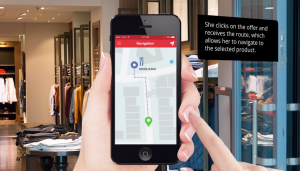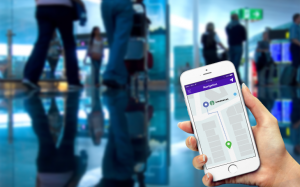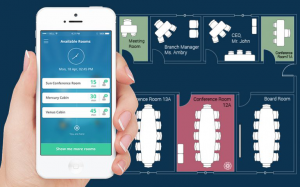With an increasing number of smartphone and tablet usage, more and more people are turning to their mobile devices to carry out most of their day-to-day activities. A good thing about it is that creating mobile apps for businesses and enhancing experiences becomes more viable. Keeping this in mind, beacon-based solutions are widely adopted across an array of industries today, including retail, museum, hospitality, education, and events.
This Bluetooth-enabled technology has the potential for massive influence on digital services. Solutions based on beacons can deliver the perfect blend of physical as well as digital experiences directly to the users’ smartphones.
If you would like to know more about what is beacon technology and its use cases, take a look at the below presentation:
Exploring a location-based technology in museums
Recently, there has been a lot of attention given to ‘iBeacons’ in the museum industry because this technology addresses the need for an inexpensive, easy-to-implement solution for indoor location-based solutions. One of the biggest challenges faced by exhibitions and museums is to attract the younger generations. Being technologically advanced and having enormous opportunities for gamification, beacon-based mobile apps surely tackle this problem. Designed to create personalized interactions, improve visitor engagement, and take content delivery to the next level, beacon-based solutions for the museum can redefine the visitor experience by allowing each art piece to personally communicate with visitors.
The global iBeacon market is set to grow at a CAGR of 200.3% over the period 2014-2019, according to the Research and Markets report – Global iBeacon Market 2015-2019
Why beacon technology best suits the museum industry
![]()
As mobile technology is evolving, the gap between the physical and the digital user experience is disappearing. A GPS signal is too weak to penetrate buildings, especially in the case of enclosed spaces with thick walls. Beacons, although relatively new in the location-based technology space, have proven themselves to be a robust solution for large indoor spaces. A beacon-based proximity marketing solution is an excellent way to provide a greater mobile experience that is highly relevant, personalized, and delivered in a timely and seamless manner.
Today, leading businesses and brands are leveraging the technology to not only deliver personalized content to their customers or visitors but also to capture important insights (such as dwell time, frequency of visits, visitors’ path, etc.) This technology is truly transforming museums by engaging people with a range of relevant content from art descriptions to educational videos, which is delivered at the right time, based on the exact location in the museum. On top of this, the technology can be used to deliver a contextual interactive guide or self-guided tours, enable contextual interpretation, organize games, scavenger hunts, and quiz, gain insights like visitors’ trip pattern and behavior, etc.
To sum up
Beacon-based proximity marketing solutions have a lot of potential to change the way visitors gain experiences at galleries, museums, and public spaces. The technology is gaining momentum across a variety of industries and there are many museums worldwide that are deploying and experimenting with beacons to deliver contextual content, create location-aware audio guides and indoor navigation solutions. If you’re looking forward to having a similar solution, feel free to get in touch with us.





